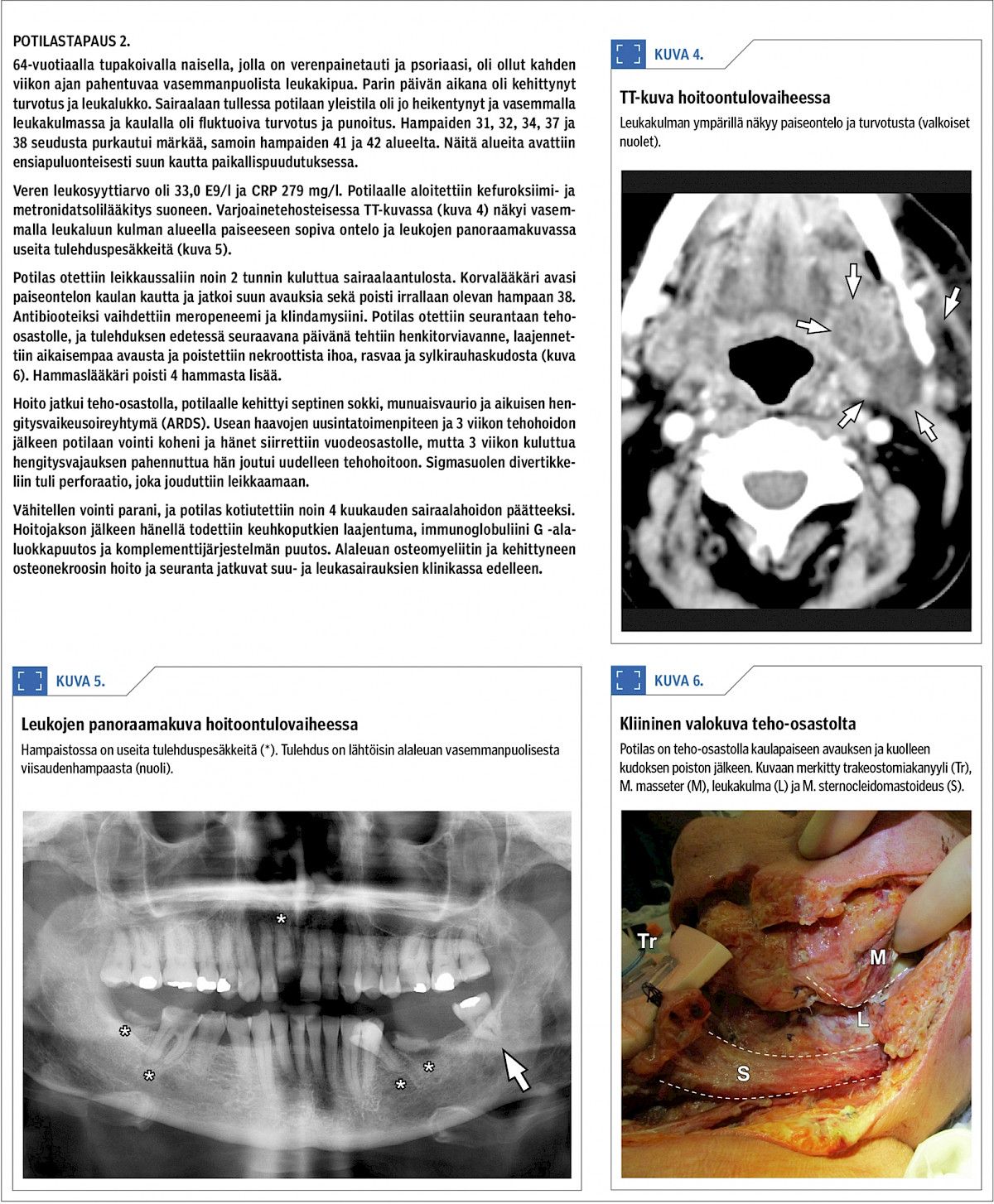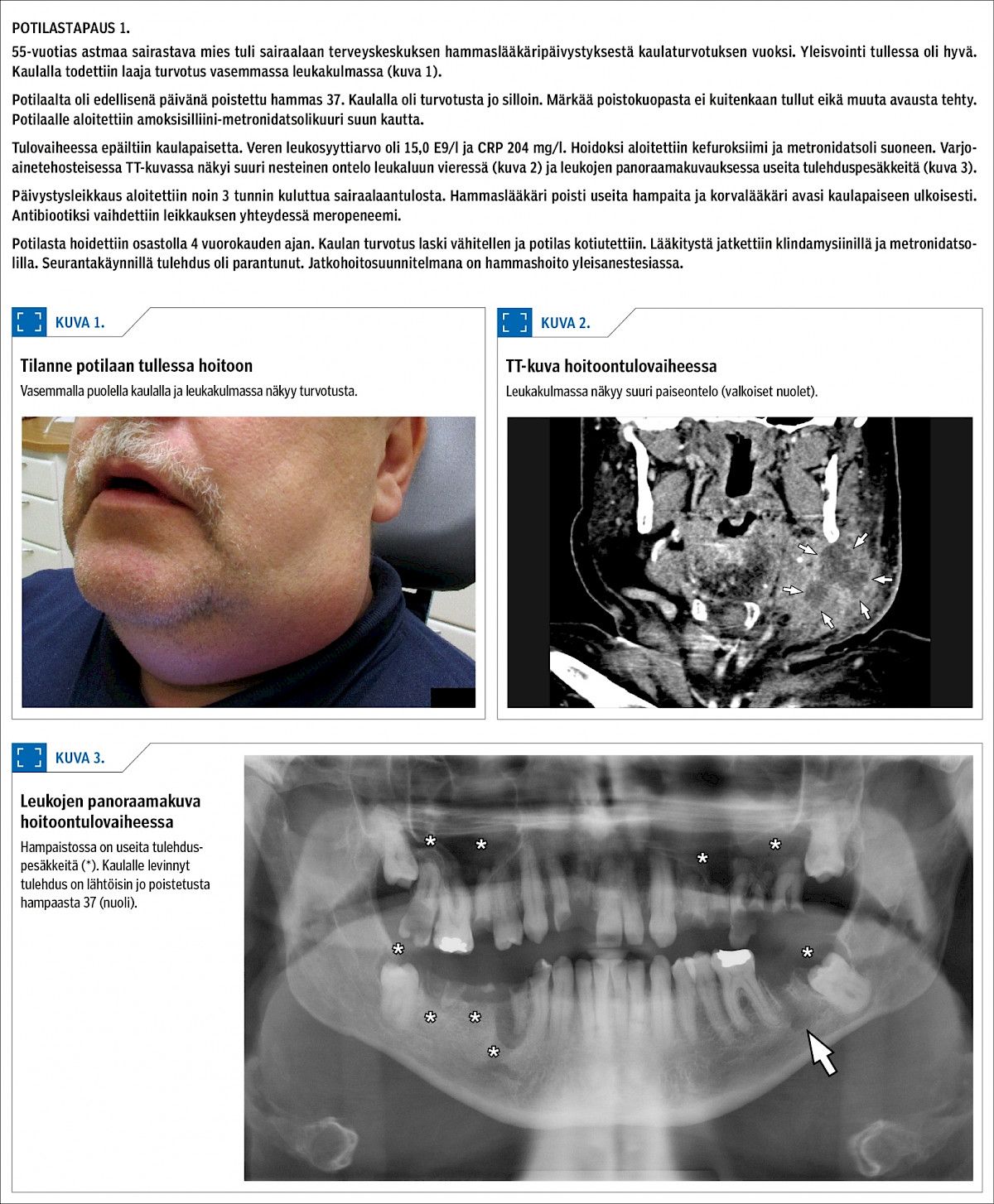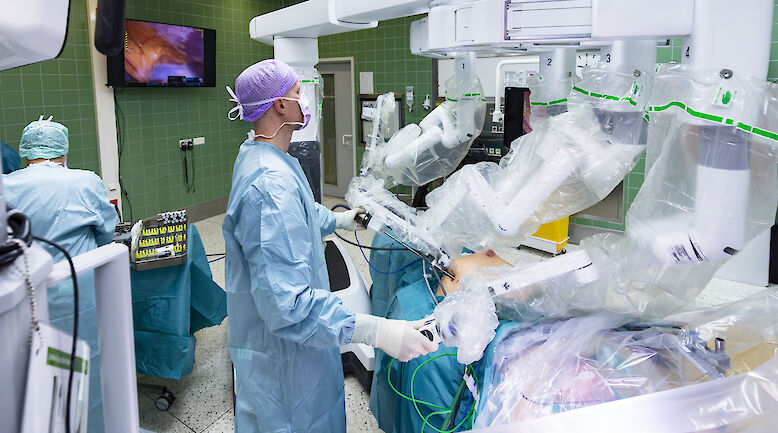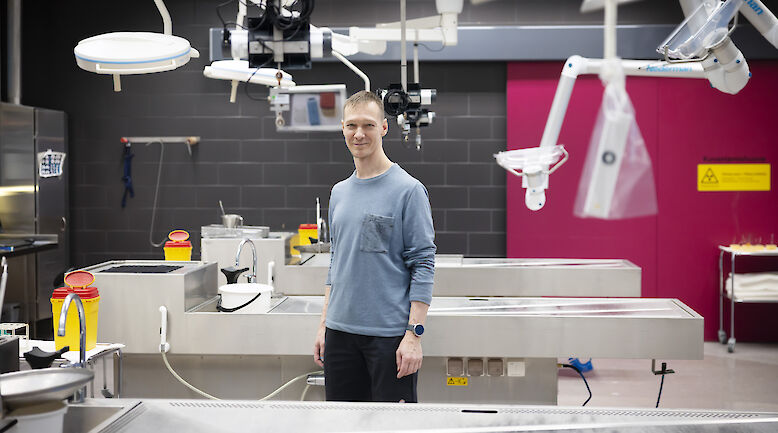Surgically treated deep neck infections in North Karelia from 2010 to 2016

BACKGROUND In 2016 we treated several complicated odontogenic deep neck infections which led us to ask if there was a growing trend in the incidence of deep neck infections in general and if odontogenic infections had different characteristics from deep neck infections of other aetiology. North Karelia Hospital District has fewer dentists per capita than any other hospital district in Finland. In an earlier study both the incidence and severity of odontogenic infections requiring hospital care had been found to increase.
METHODS We searched the electronic patient records for patients hospitalized with procedure codes ENA32 (incision of deep pharyngeal infection) or EJA00 (incision and drainage of tongue or floor of mouth abscess) from 2010 to 2016. We recorded age, sex, comorbidities, antibiotics used, microbiological findings, need for tracheostomy, and length of stay and possible intensive care. We also evaluated whether the infection was odontogenic or not, and in odontogenic infections attempted to identify the tooth causing the infection. The National Institute for Health and Welfare provided corresponding national data on patients treated with the same procedure codes within the same time period, and these were compared to the North Karelian data.
RESULTS We identified 58 patients, 32 male and 26 female. A total of 26 patients (45%) had odontogenic infections. Tracheostomy was performed in 16 patients (28%), and 24 patients (41%) needed intensive care. Thirteen patients (22%) had at least one complication, including 5 patients (9%) with mediastinitis. Comorbidities were present in 50% of patients with odontogenic infections and 75% of patients with non-odontogenic infections. The age distributions of these two groups were also different, the main concentration of odontogenic patients being from 15 to 45 years while non-odontogenic patients were either children or over 50 years old. The incidence of deep neck infections in North Karelia was 4.90/100 000/year (95% CI 3.79-6.34) and that in Finland 2.80/100 000/year.
CONCLUSIONS The incidence of deep neck infections requiring surgical treatment is almost twice the average incidence in Finland, and almost half of the infections were odontogenic. Compared to non-odontogenic infections, patients with odontogenic infections had a lower rate of comorbidities and were more frequently of working age.















